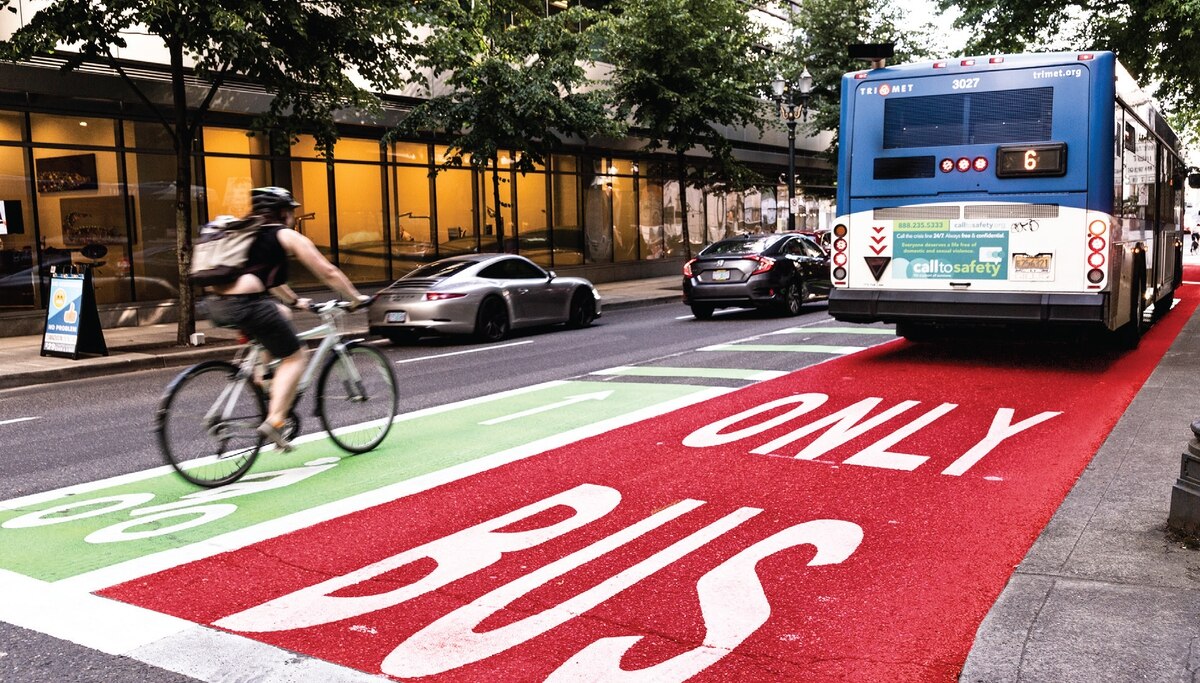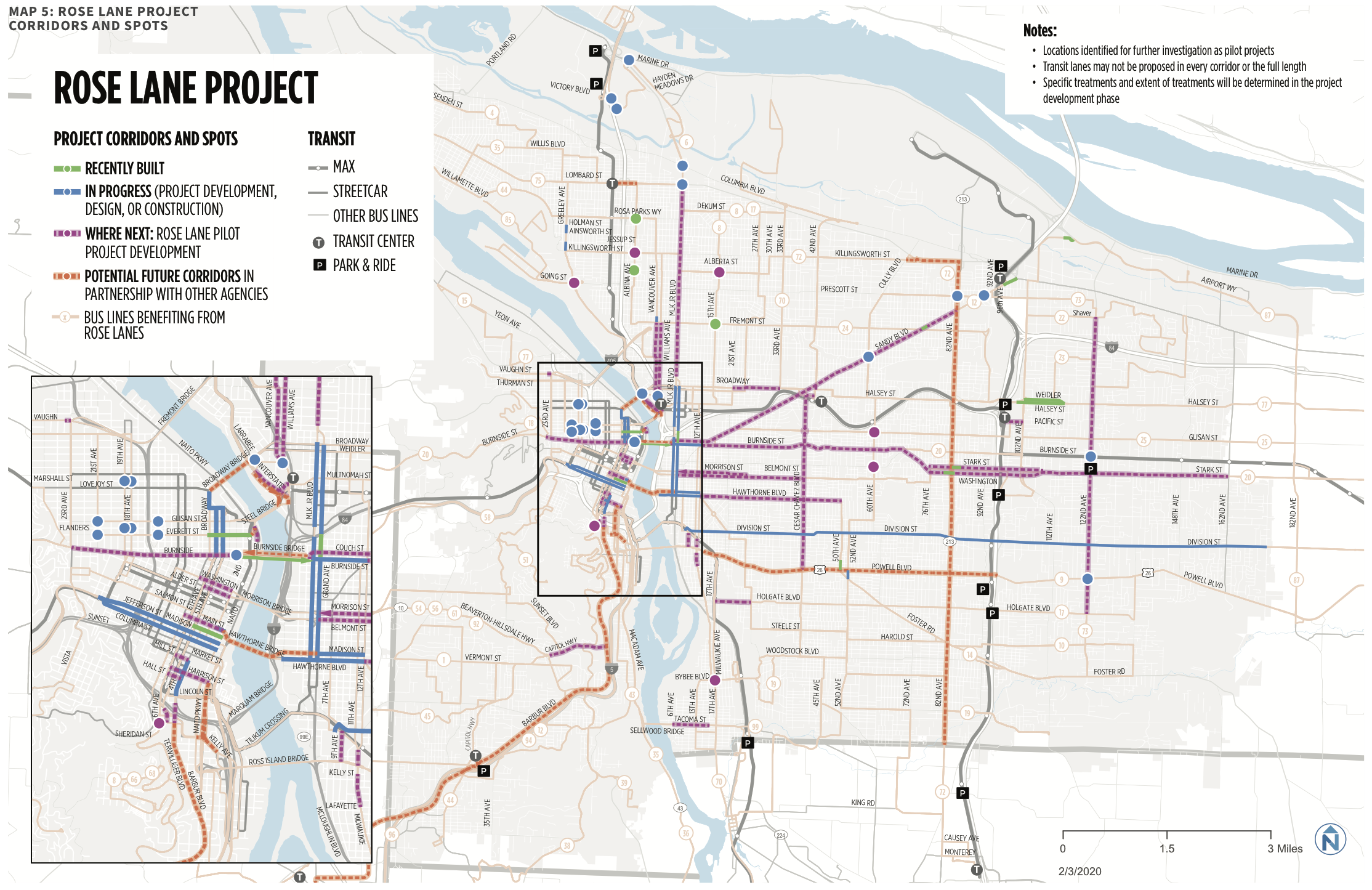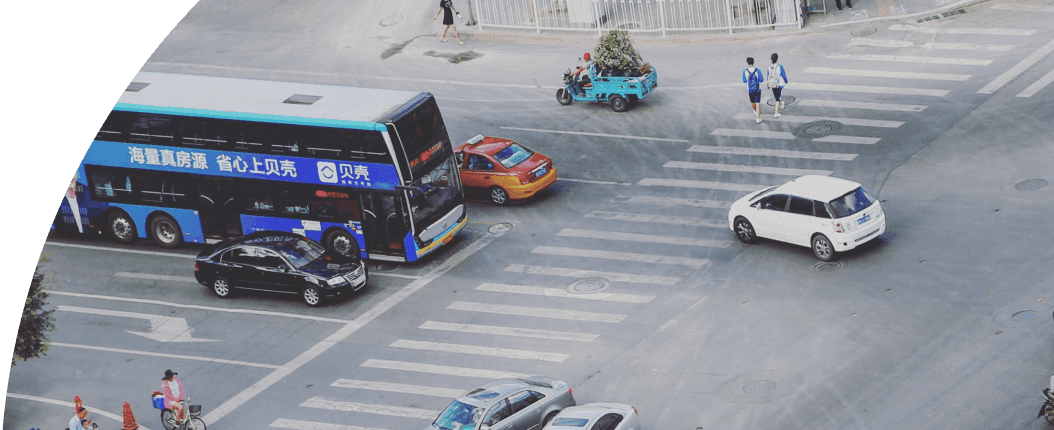
News
By Sean Doyle, February 14, 2020
 Rose Lane Project, it’s designed to advance equity, reduce carbon emissions, and increase transit ridership with quick-build projects. It also offers lessons to other cities struggling with sluggish transits systems mired in a sea of cars.
Rose Lane Project, it’s designed to advance equity, reduce carbon emissions, and increase transit ridership with quick-build projects. It also offers lessons to other cities struggling with sluggish transits systems mired in a sea of cars.
This post was originally published by Transportation for America, a program of Smart Growth America
Yesterday, the City of Roses (Portland, OR) unanimously adopted an ambitious plan to speed up transit service by freeing it from traffic and improve racial equity across the city. Aptly named the Rose Lane Project, the adoption of this plan follows high-profile changes in New York City and San Francisco that have closed entire streets to private vehicles in order to free riders from crippling traffic and open up space for pedestrians and cyclists.
But the Rose Lane project, while sharing similar goals, is different. Instead of closing a single street to vehicles, the city is launching a series of improvements to speed multiple bus lines and streetcars through the city with a variety of treatments, including but not limited to bus lanes. And it’ll all happen fast. The Rose Lane Project is designed to be implemented as pilot projects that can be deployed quickly with low-cost materials, evaluated and tweaked over time, and then made permanent if they’re successful.
Phase 1 consists of 29 separate projects from transit queue jumps to traffic light changes to bus lanes that will be implemented this year and next. Projects in Phase 2 will bring further, tailored street improvements to a network of high-priority transit corridors in 2021 and 2022.
 a full report on the Rose Lane Project that is chock full of easily digestible information and great graphics. Cities around the country should take note—inequality and climate change are issues that every community is dealing with and the Rose Lane Project offers a vision of a healthier, safer, more equitable transportation system.
a full report on the Rose Lane Project that is chock full of easily digestible information and great graphics. Cities around the country should take note—inequality and climate change are issues that every community is dealing with and the Rose Lane Project offers a vision of a healthier, safer, more equitable transportation system.
Related News

© 2025 Smart Growth America. All rights reserved
Site By3Lane Marketing








